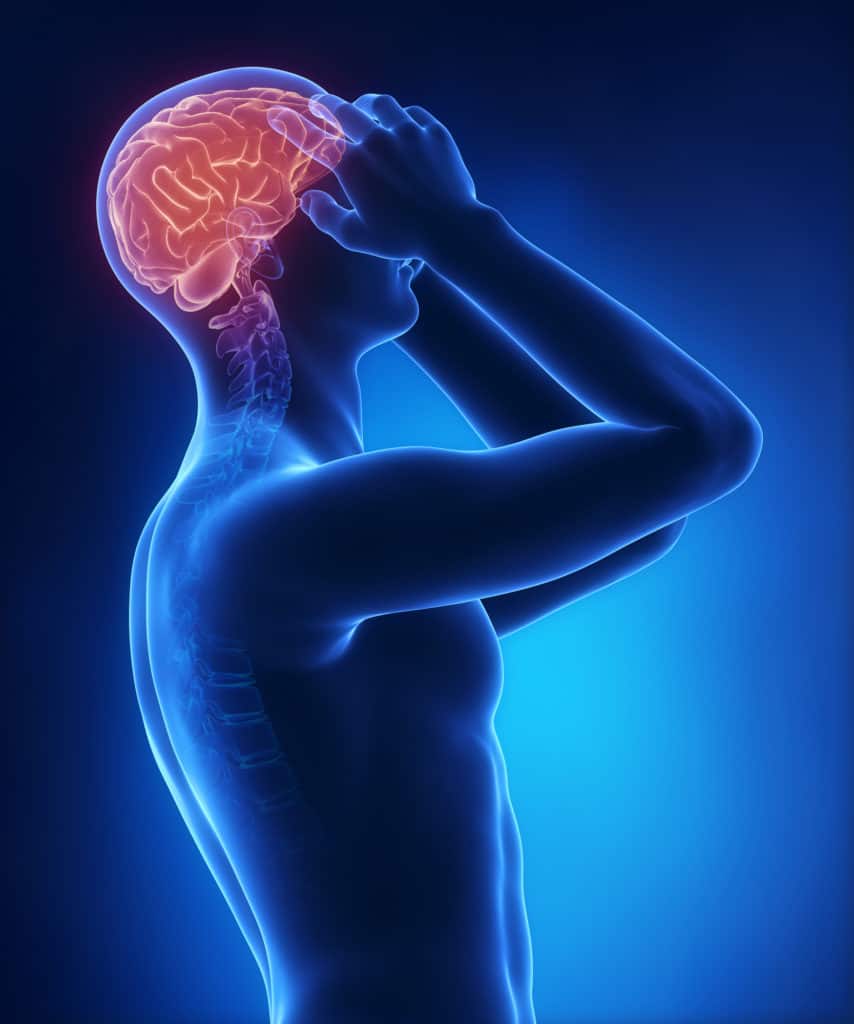
We know how it feels. It’s miserable.
When you suffer from migraine headaches, the experience is far worse and more painful than regular headaches.
Migraines are a form of neurological disease that leads to an intense throbbing pain that leaves you bedridden and unable to work, exercise, or socialize for days, weeks, or even months in severe cases.
In addition, sounds, light, and certain movements can trigger additional symptoms like tingling, numbness, nausea, fatigue, intense pain, irritability, and visual disturbances accompanying the migraine headache.
More Blogs From Release Works
How Breast Augmentation Scars Can Cause Pain and Problems, Both Now And Later
Can I Avoid Getting Scar Tissue After Surgery?
What Is a Fascial Plane, And Why Should I Know About It?
What Is A Migraine?
Western Medicine uses the term "migraine" to describe a particular neurological disease that causes various symptoms.
The most common migraine symptom is an intense throbbing pain on one side of the head. The pain may worsen with physical movements and exercise, certain smells, sounds, or lights.
In most cases, the pain may remain for a couple of hours up to a few days. But they can last longer in severe cases; Some people get a migraine every day.
Statistics suggest that around 12% of Americans suffer from migraines.
What Is The Difference Between A Headache And A Migraine?

While there are around 150 different kinds of headaches, they are categorized into two groups—primary and secondary.
Migraines are primary headaches, which means an existing medical condition does not cause them. Clinicians usually diagnose primary headaches with an examination based on symptoms.
They don't usually perform additional tests or look for the root cause. Secondary headaches are said to be caused by existing underlying medical conditions.
But for this blog, we will concentrate on primary migraine headaches.
What Are Migraines?

There are various kinds of migraines. You might have heard some of these before:
Migraine with aura:
Prevalent in around 15-20% of the population. These headaches are also called complicated migraines, in which the patient sees an “aura ."An aura is a visual disturbance like seeing flashing lights, vision changes, or other sensory functions.
Migraine without aura:
Also referred to as a common migraine, it comes on without the onset of an aura. While it shares the same headache symptoms, patients don’t experience an aura.
Migraine without head pain:
Paradoxically, some patients have an aura without a headache. Other terms for this type of migraine include acephalgic or silent migraine. The symptoms do include an aura but not the typical headache.
Symptoms of this type include sensory/neurological changes on one side of the body accompanied by hemiplegia (temporary paralysis). It could begin with tingling, dizziness, visual disturbances, numbness, and intense weakness on one side. It may or may not include a headache.
Retinal/ocular migraine:
The onset of a retinal/ocular migraine includes temporary complete or partial loss of sight in one eye with a dull throbbing pain behind the eye that can spread.
The loss of vision can range from a few minutes to a few months, which can be scary.
But if you experience the new onset of retinal migraine, you must consult a medical professional without delay, as it could be due to an underlying medical condition.
Chronic migraine:
These migraines can last for around two weeks with changes in the severity of pain and symptoms.
Sadly, most patients who suffer from chronic migraines accept their fate (instead of finding and fixing the root cause, as we do at Release Works) and use medication for pain management over long periods. Unfortunately, this strategy usually increases the frequency of migraines.
Migraine with brainstem aura:
In this condition, accompanying symptoms include double vision, imbalance due to vertigo, speech, visual impairments, etc. The headache can arise in the back of the head, with the symptoms popping up suddenly along with nausea, tintinnabulation, etc.
Status migrainosus:
One of the more severe kinds of migraines that rarely occur but can remain for more than three days. The pain and nausea that accompany these migraines can be intense. In addition, some types of medication or withdrawal from medication can bring on this migraine.
What Are The Four Stages Of A Migraine?

Migraines are divided into 4 phases or stages: prodrome (pre-monitory), aura, headache, and postdrome. Around 30% of patients experience these four stages before the onset of the migraine.
Phase 1:
Prodrome:
The duration of the prodrome before a migraine can extend from hours to days. However, not everyone experiences this stage before the migraine appears, so we also refer to this stage as the preheadache stage.
Phase 2:
Aura:
The visual and sensory disturbances that often precede a migraine may remain for as little as 5 minutes to an hour. However, again, not many people experience an aura with their migraines. Plus, a select few may simultaneously experience the aura and headache.
Phase 3:
Headache:
The headache phase of a migraine can range anywhere from four hours to three days. While in some cases, the headache may be mild pain-wise, in others, the pain can be intense and throbbing like a drill being driven into the head. Generally, it begins on one side and gradually spreads over the entire head.
Phase 4:
Postdrome:
The phase after the headache happens for 8 – 24 hours. Patients describe it as a “hangover from a migraine ."Almost all patients who suffer from migraines experience the postdrome phase.
The entire 4-phase process of a migraine may last from 8 to 72 hours in most cases. But it can be much longer in some patients.
Is It A Migraine?
What Are the Most Common Symptoms?
Migraine with aura: Along with a headache, other symptoms of this type of migraine may be visual, including temporary loss of vision and sensory symptoms like pins and needles.
Migraine without aura: The more common migraine without aura is generally a headache accompanied by pain on one side of the head. There could be a minimum of 5 such instances, lasting anywhere between 4 hours to three days.
Some of the additional symptoms that may occur alongside a migraine include:
The Standard Approach To Treating Migraines

The difference between a standard headache and a migraine is that migraines are considered “chronic," which, in our opinion, is Western Medicine's word for "we don't know ."
In other words, they don't know what causes them, and there is no sure cure – apart from super-strong pain medications and off-label medications like antidepressants and other neurological drugs that sometimes prevent the onset of a migraine.
Doctors refer to these medications as “abortive medications” or prophylactic or preventative, which they use to describe medications that prevent migraines.
However, they're only effective if you take them at the first onset of the migraine when the pain is just starting and mild, which isn't always easy.
After that, they can decrease the intensity and frequency of the headaches. Still, patients who suffer from regular migraines are often required to take them every day to effectively prevent migraines.
They are thought to work by causing blood vessels to constrict and dilate, alleviating the pain. But the side reality is that they all come with a whole host of unpleasant side effects.
Plus, all these meds do is mask and manage the pain. So they're not a long-term solution, especially if you value your health.
The Release Works Approach To Migraines

Unlike Western Medicine, we believe that there is always a root cause of why someone might suffer from regular migraines.
It's just a case of finding it with a bit more time, patience, and body-led detective work. In fact, our founder, Michael Sudbury, used to be plagued by pressure headaches that left him bedridden and unable to go about his normal daily activities.
That's why we're so passionate about helping. Like, helping headache and migraine sufferers with effective treatment to find and fix the underlying cause, so you don't have to build your life around your migraines and your so-called "triggers."
You don't have to continue suffering or just cope with the situation.
We can help.
No more pounding headaches.
No more light, sound, or smell sensitivity.
Even if you've been told that your migraines are due to unavoidable factors like genetics, a busy life, psychosocial issues, or your working environment, you don't have to accept a lifetime of daily medications, or worse still, injections and nerve blocks.
Instead, our approach helps you work towards a healthier future and slowly get your life back – minus the anxiety, frustration, and stress of daily headaches and migraines.

